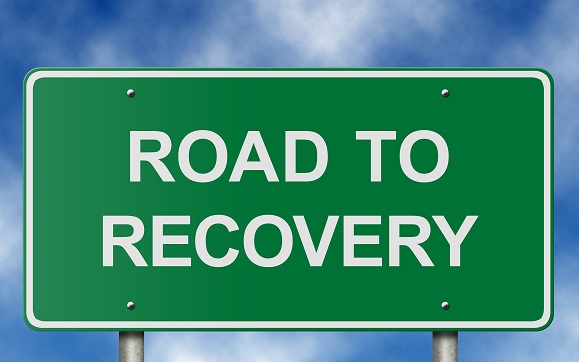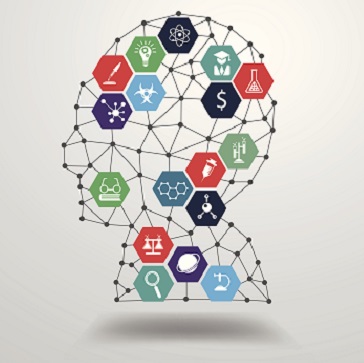18 Jun 2014
Abstinence In Addiction Recovery
The prevailing view in addiction treatment and recovery is that abstinence is the best approach. This means that once drugs or alcohol are removed from the body following detox, the addict resolves to totally abstain from using them. The reasoning behind this idea is that an addict is incapable of moderation. Many addicts in recovery believe that they have learned how to partake responsibly and that they can have a drink or two at a party. Is it really possible? Or do you need to abstain for the rest of your life?
Why Abstinence?
 Abstinence as a philosophy for addiction treatment has been around for decades. Alcoholics Anonymous is one of the oldest support programs and is one that firmly believes in the importance of abstinence. Another model, similarly based on the 12 steps, is called the Minnesota Model and also calls for total abstinence from drugs and alcohol. For both programs, and any 12-step based program for addiction treatment, the primary goal is lifelong abstinence.
Abstinence as a philosophy for addiction treatment has been around for decades. Alcoholics Anonymous is one of the oldest support programs and is one that firmly believes in the importance of abstinence. Another model, similarly based on the 12 steps, is called the Minnesota Model and also calls for total abstinence from drugs and alcohol. For both programs, and any 12-step based program for addiction treatment, the primary goal is lifelong abstinence.
These addiction treatment programs advocate for abstinence because they believe it is the only way that an addict can return to a normal way of life. They claim that an addict in recovery cannot handle having just one drink, or using narcotic prescription painkillers. One small slip-up may lead to a downward spiral and a return to full-blown addiction.
Are There Any Non-Abstinence Treatment Options?
As addiction treatment advances and evolves, experts have developed models and programs that do not necessarily require abstinence. For example, harm reduction is a philosophy of treatment that is gaining ground. Long used for heroin addicts, harm reduction means taking steps to reduce risks and harm caused to addicts. It allows for addicts to reach sobriety on their own terms and in their own time. Heroin addicts being treated in this way are given maintenance drugs like methadone, or clean needles to reduce the risk of spreading infectious diseases such as HIV/AIDS, or hepatitis B and C.
Heroin addicts are not the only ones who are experimenting with non-abstinence. Other types of addicts are embracing the idea of moderation. Using alcohol moderately and responsibly is becoming more popular as a way for addicts to re-enter society as a contributing member. One such group advocating this approach, Moderation Management, believes in the possibility of changing behaviors without requiring total abstinence. In particular, they advocate for problem drinkers to learn how to become moderate drinkers.
Is Abstinence Best For Me?
Whether you need to embrace complete abstinence is a personal choice. Some people respond well to a non-abstinence-based approach. They can be successful at learning how to moderate drinking, how to drink socially and how to be responsible about drinking without taking a headfirst dive back into addiction. For others, however, this approach simply doesn’t work and complete abstinence is the only safe way to remain healthy and well.
Making the choice to embrace moderation is not a decision to make alone. If you are already in recovery, talk to your therapist, counselor, mentor, and your closest friends and family members. Getting treatment was not something you could do alone and making this choice isn’t either. If you decide to try drinking in moderation, make sure that the people who support you know about your choice and respect their opinions. If everyone says it’s a bad idea, listen. If you do try to drink and it causes a bad relapse, don’t feel bad. Just get back into your recovery routine, resume therapy sessions, if possible, and recommit to sobriety.
Learn More About 12 Step Treatment Programs – And Break Free From Addiction!
Methadone maintenance treatment and abstinence-based treatment are two approaches used in recovery programs for people affected by opioid addiction. When successful, each of these treatment options helps opioid addicts reduce their level of craving for continued drug/medication use.
In a study published March/April 2014 in the Journal of Addiction Medicine, a multinational team of researchers compared the brain effects of successful methadone maintenance treatment to the brain effects of successful abstinence-based treatment. These researchers concluded that each of the two approaches to opioid addiction treatment has its own unique impact on brain function.
 Harm Reduction
Harm Reduction
Methadone maintenance treatment is one form of a harm reduction-based approach to substance addiction. In harm reduction, doctors don’t set complete abstinence from substance intake as a necessary goal of treatment.
Instead, they attempt to limit the damage caused by uncontrolled substance use, even if this means that their patients still engage in substance use to a lesser degree or in more strictly limited circumstances.
An opioid addict participating in methadone maintenance receives a specific amount of methadone (an opioid medication) every day instead of consuming an unknown or unpredictable amount of heroin or some other powerful opioid drug of abuse. This dose of methadone provides enough of an opioid effect to avoid triggering symptoms of withdrawal i
Abstinence-Based Treatment For Opioid Addiction
An abstinence-based approach to opioid addiction treatment may also involve the use of methadone or another opioid medication called buprenorphine as a temporary treatment to help recovering addicts avoid the worst symptoms of opioid withdrawal.
However, the ultimate aim of this approach is to help recovering addicts completely avoid opioid use on an ongoing basis. This means that the use of opioid medications is strictly limited, if it occurs at all. Abstinence-based programs may also use non-opioid-based medications such as naloxone or naltrexone, which actively block the drug effects of opioid substances in patients/clients who have completely detoxified from active opioid use.
Counseling And Psychotherapy Treatment Sessions
Both methadone maintenance and abstinence-based programs also typically use some form of counseling, psychotherapy or mutual support to augment the effects of medication and improve the odds that treatment will have a beneficial outcome.
Forms of counseling and psychotherapy used in opioid addiction treatment include a behavioral retraining approach called cognitive behavioral therapy and a modern-day form of psychoanalysis called psychodynamic therapy. Many mutual support groups for recovering opioid addicts follow a basic 12-step approach that emphasizes ongoing drug abstinence.
Differing Brain Effects For Methadone vs. Abstinence-Based Treatment
In the study published in the Journal of Addiction Medicine, researchers from Australia and Iran used an imaging technology called fMRI (functional magnetic resonance imaging) to compare the brain functions of a group of people who successfully participated in methadone maintenance treatment for heroin addiction to the brain functions of a group of people who successfully participated in abstinence-based treatment for heroin addiction.
For comparison’s sake, they also examined the brain functions of a third group of people unaffected by opioid addiction. The fMRI scans were taken while the members of all three groups viewed a mixture of stimulating cues, including cues designed to trigger any residual cravings for heroin. In addition to analyzing the data from these scans, the researchers asked each individual to report his or her level of drug craving prior to and after exposure to the heroin-related cues.
The researchers found that the members of the methadone maintenance group and the members of the abstinence-based treatment group displayed an equal ability to resist the heroin cues used during the fMRI scans. However, they concluded that different brain areas were activated in each group as a result of exposure to the cues.
Compared to people unaffected by opioid addiction, the people who participated in methadone maintenance showed an unusually high level of activity in parts of the brain responsible for visual processing, logical analysis, the control of both pleasure- and fear-based emotional responses, and basic muscle coordination.
On the other hand, the people who participated in abstinence-based treatment showed an unusually high level of activity in parts of the brain responsible for regulating decision-making, controlling impulsive behavior, anticipating rewards and controlling certain key involuntary functions in the cardiovascular (heart and blood vessel) system.
The authors of the study published in the Journal of Addiction Medicine note that, when successful, both methadone maintenance treatment and abstinence-based treatment are linked to increased activity in brain areas that help recovering opioid addicts significantly reduce their drug cravings. They also note the clearly differing brain pathways that are typically activated in participants in each type of treatment.
Discover Additional Treatments For Opioid Addiction Help Is Available – Call Now!


